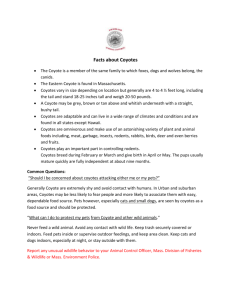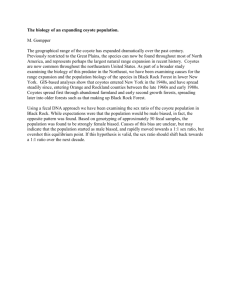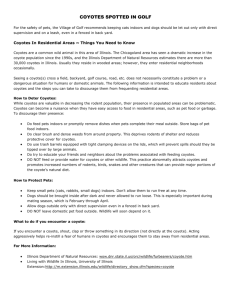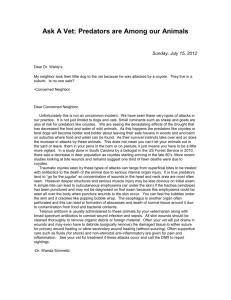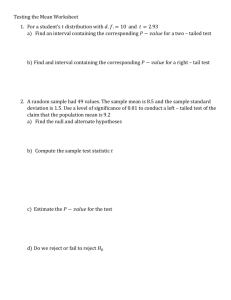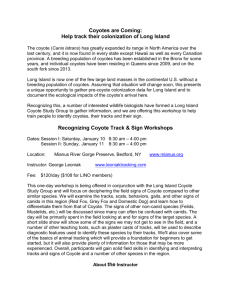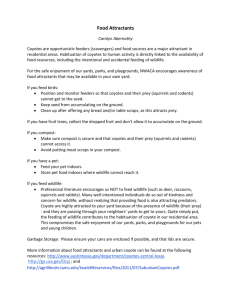Case Study II: Kids now getting 'adult' disease
advertisement
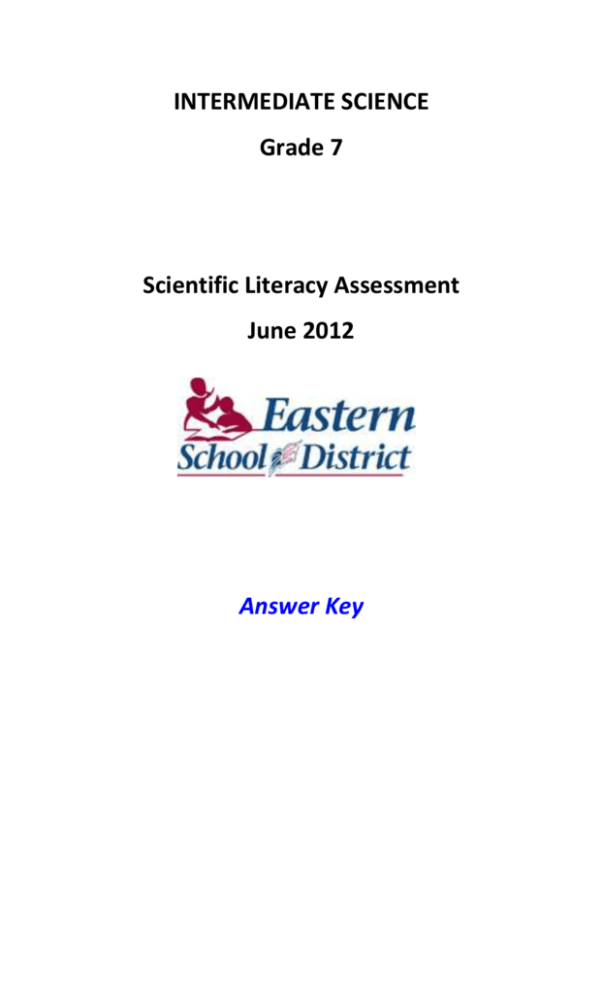
INTERMEDIATE SCIENCE Grade 7 Scientific Literacy Assessment June 2012 Answer Key Data Analysis Read the following situation and answer all questions in the space provided. (10 points) Mining is an important industry in Newfoundland and Labrador. Some minerals can be mined directly on the earth’s surface, while others are extracted from depths within the earth’s surface. A local mining company in central Newfoundland has identified a valuable deposit of copper located at a depth of 700 meters (m). When drilling the initial holes down to the copper, the following temperatures at various depths were recorded: Depth (m) Temperature (0C) 0 6 100 9 200 12 300 15 400 18 500 21 1. When gathering this data, identify the independent (manipulated) and dependent (responding) variables. (1) Independent (manipulated): ________Depth of the Earth’s Crust_________ Dependent (responding): ________Temperature ____________________ 2. State one variable which have to be kept constant (controlled) in order for the results of the data to be valid. (1) The instrument that is being used to measure the temperature 3. Plot a fully labeled line graph of the data obtained on the grid below. (4) Title: ____________________________________________ 4. Predict the temperature at a depth of 350 meters (m). (1) 16.5 °C 5. What is the predicted temperature at the depth where the copper is located? (1) 27° C 6. Based on the data, what is the relationship between temperature and depth? (1) The greater the depth into the Earth’s surface, the higher the temperature. 7. Are they places in the earth’s crust where higher temperatures are produced at the same depths? Explain. (1) In areas where there are active volcanoes or in areas where the tectonic plates are separating because of molten rock being near the surface of the earth. Case Study I: Coyotes in Newfoundland 1. How did coyotes get to Newfoundland? (1) A. B. C. D. Accidently transported by cargo ships Coyote pups were brought to the island as pets They travelled on ice floes They were introduced to the province by wildlife officials 2. What do coyotes eat in Newfoundland? (1) A. B. C. D. 2. __D___ Caribou, deer, and bird seed Garbage, wolves, and grizzly bears Moose, caribou, and skunks Snowshoe hares, berries, and birds 3. When was the first report of coyotes on the island of Newfoundland? (1) A. B. C. D. 1. ___C___ 3. ___B___ 1912 1986 2010 2012 4. Give TWO (2) reasons why Newfoundland is good habitat for coyotes? (2) Answers may include: - There is a lot of prey and food that coyotes like to eat - They can adapt to a variety of habitats and commonly live in forested areas which are abundant in our province. - They have few natural predators. - Etc… 5. Identify TWO (2) major concerns regarding the growing number of coyotes in populated areas? (2) Answers may include: - Coyotes may come in contact with humans and can potentially harm them, especially small children - Coyotes may endanger / eat house pets (i.e dogs, cats, etc) - Coyotes may be hunted by locals which is an issue of public safety - Etc… 6. What evidence from the article makes experts believe that coyotes may interbreed with wolves or dogs? (1) A study published last year that found the Eastern Coyote had eight per cent wolf ancestry and eight per cent dog ancestry in its DNA. He said that could explain the animals in New Brunswick and Newfoundland. These coyotes are most likely recent hybirds. 7. As cities and towns expand, more natural habitats are disturbed. What can we do to coexist with coyotes? (2) Answers may vary: - Create safe zones for coyotes - Educate community on how on protocol to remove coyotes from public zones (i.e. call the dept of wildlife). - Limit the amount of food and garbage around homes to reduce the likelihood of coyotes coming into neighbourhoods. - Etc… Case Study II: Kids now getting ‘adult’ disease Questions: 1. How often do Type 1 diabetics need to take insulin? (1) A. B. C. D. Once a day Once every two days Several times a day Several times an hour 2. What role does insulin play in helping people process food? (1) A. B. C. D. 1. __C___ 2. __A___ It helps transfer sugar from the bloodstream into the body’s cells It helps reduce frequent urination It helps circulate blood throughout the body It helps prevent the break down of proteins in food. 3. Identify two main differences between type 1 and type 2 diabetes. (2) Answer may include: Type 1 diabetes: - Occurs when the body stops producing insulin. - This normally occurs during the adolescent years. - People with this form of diabetes need to take regular insulin injections each day. Type 2 diabetes: - is when the body continues to produce insulin, but the body does not effectively manage how it uses the insulin to help transform glucose into energy that is required by our cells. - People with Type 2 diabetes must take pills or insulin to help control it. - This type is normally something that develops as an adult, but is becoming prevalent in adolescents. 4. How does a person measure the glucose level of their blood? (2) To measure the glucose level of their blood, they use a pinching tool, Glucometer, that draws a little blood 5. Is this an important issue that people in our province ought to be concerned with? Why or Why not? (2) Yes this is an issue of concern because this is a disease that is becoming more common in adults and youth. The number of people who are developing this disease is in our province is the highest in the country and is expected to increase dramatically in the next few years. 6. What are some steps you could do to reduce your chances of getting type 2 diabetes? Explain your answer. (2) Answers may include: - Develop healthy eating habits, Exercise on a regular basis (play more sports) Eat reasonable portioned meals, etc…

